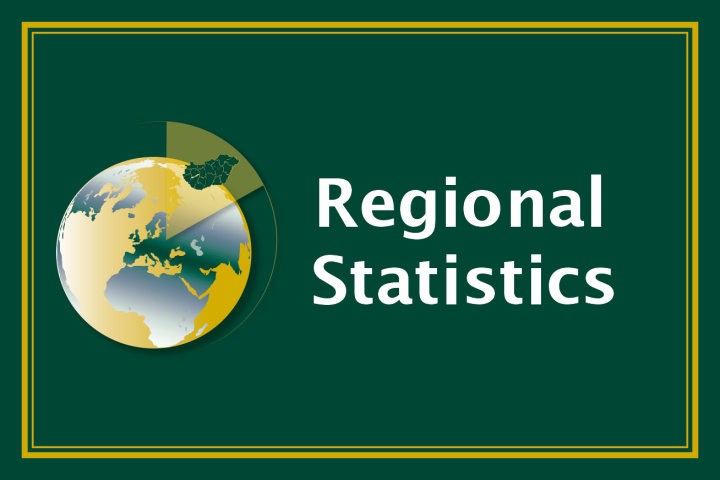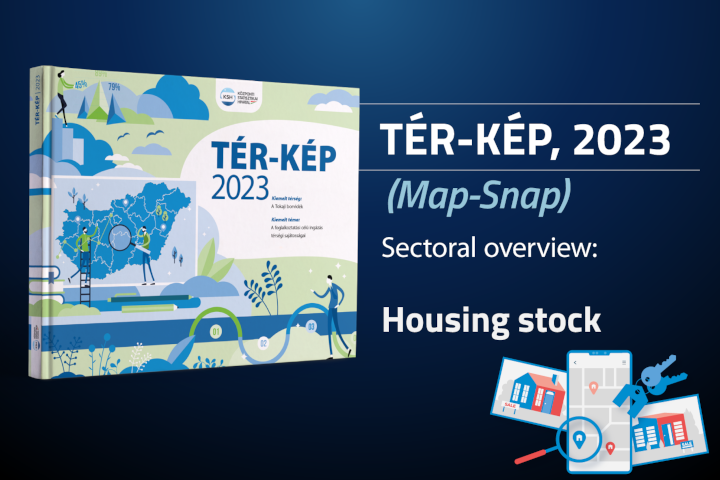Key figures
Inflation
Indicator description
Average change in the prices of goods and services purchased by households for own use, compared to the same period of the previous year. The consumer price index less 100 equals the inflation rate.
Source:
Summary tables (STADAT)
Latest data: –
GDP
Indicator description
Gross domestic product is the sum of gross value added produced by industries or sectors, valued at basic prices, and of the balance of taxes and subsidies on products, which cannot be divided by industry or sector, less financial intermediation services not divided by industry or sector. GDP volume change compared to the same period of the previous year is presented based on unadjusted data.
Source:
Summary tables (STADAT)
Latest data: –
Adjusted population
Indicator description
The full-scope censuses conducted every ten years show a comprehensive picture of the number and composition of the population. For determining the annual population number in the period between two censuses, the starting point is the population number of the last census (currently the census with the reference date of 1 October 2022), and from this, the population was estimated by using natural increase or decrease data available from the statistics of vital events until 2000. From 2001 international migration is also taken into account.
Source:
Summary tables (STADAT)
Latest data: –
Unemployment rate
Indicator description
The ratio of unemployed persons to the economically active population of corresponding age. The indicator can be calculated for different age groups, the default is the age group 15–74. Further selected age groups: 15–24, 25–54, 55–74.
Source:
Summary tables (STADAT)
Latest data: –
Employment rate
Indicator description
The ratio of employed persons to the population of corresponding age. The indicator can be calculated for different age groups, the default is the age group 15–64. Further selected age groups: 15–24, 25–54, 55–64 and 20–64.
Source:
Summary tables (STADAT)
Latest data: –
Industrial production
Indicator description
We measure changes of industrial production by variations of industrial production values, however the impact of price change is filtered out. We calculate the volume index of production based on comparative prices data of the industrial production value (presented at reference period price levels).
Source:
Summary tables (STADAT)
Latest data: –
Featured
HCSO Monitor
The collection of interactive figures provides up-to-date information on the latest domestic and international socio-economic trends.
The decisive part of the figures included in HCSO Monitor are downloadable in both image and data formats (PNG, SVG and CSV).
Feel free to browse the data in HCSO Monitor, updated many times a week!
Latest update: 24/04/2025
The decisive part of the figures included in HCSO Monitor are downloadable in both image and data formats (PNG, SVG and CSV).
Feel free to browse the data in HCSO Monitor, updated many times a week!
Latest update: 24/04/2025
On-line purchases
Based on international trends, the popularity of purchases on the internet rapidly increases in Hungary as well, more and more people recognise its advantages and take advantage of this. 56% of households placed an order on-line in the 4th quarter of 2024, and they spent an average 84.7 thousand forints in making purchases on the internet. E-buyers most often purchased articles of clothing and shoes (64%), which was followed by electrical goods (48%), the administration of overheads payments, and of various finances (42%), as well as the order of household equipment (31%).
24/04/2025
24/04/2025
Notification of balance and debt of general government sector (first EDP notification in 2025)
The deficit of the general government sector in Hungary was HUF 4,006 billion, 4.9% of GDP in 2024 based on preliminary data of national accounts. According to data produced in compliance with the methodological requirements of the system of national accounts (ESA 2010) the revenue of the general government sector was HUF 34,203 billion and its expenditure HUF 38,210 billion. Compared to 2023 revenues increased by 6.7% and expenditures by 2.9%.
22/04/2025
22/04/2025
Easter preparations
Easter is the most important celebration in Christianity, a symbol of rebirth and hope. Easter traditions include egg painting, water sprinkling and family gatherings with typical dishes such as ham and kolach (traditional sweet bread). The celebration has not only religious but also cultural significance, intertwined with the spirit of spring renewal.
16/04/2025
16/04/2025
European Statistical Monitor: April edition
The chart collection contains monthly and quarterly indicators of economic and social developments by country and over time. The monthly updated chart collection with the latest available data for each indicator is available here.
16/04/2025
16/04/2025
Day of Debrecen, 11 April 2025
King Leopold I gave Debrecen free royal town status in a patent dated 11 April 1693, in commemoration of this event the city is celebrating since 1998 its day on 11 April. Debrecen was the capital of the country twice, since the mid-1980s it is the second most populous city of Hungary (preceding Miskolc). It is a significant economic and educational-cultural centre. The city is the first in the rank of county seats considering the number of registered enterprises, and the University of Debrecen hosts, among the tertiary educational institutions of Hungary, the most foreign students.11/04/2025
HCSO–ingatlan.com-rent index, March 2025
In March 2025, rents were broadly stagnant (-0.1%) nationally, while in Budapest they increased (0.7%) compared to the previous month. The nominal rent index for March was 116% higher than the 2015 base nationally, 107% higher in the capital and 27% and 21% higher respectively in real terms. Over a year, nominal rents increased by 7-8% and real rents by 2-3%.
10/04/2025
10/04/2025
Regional Statistics, Volume 15, Number 2, 2025
The latest issue of the scientific journal features studies on the following topics: the small and medium-sized enterprise clusters’ and industrial estates’ spatial spillover effects; the higher education’s role in shaping female entrepreneurship; regional residential battery storage diffusion pathways in Hungary; geographically and temporally weighted multivariate generalised gamma regression for modelling; the role of fiscal decentralisation in poverty reduction; the impact of geographical diversification on portfolio performance; poverty traps in Indonesia; economic strategies for managing internal migration in Kazakhstan.
09/04/2025
09/04/2025
TÉR-KÉP, 2023 – Sectoral Overview
The Sectoral Overview chapter of the publication ‘TÉR-KÉP, 2023 (Map-Snap)’, shows the spatial differences in Hungary through the state of some sections of the economy (agriculture, industry, construction, catering and trade). In 2023, housing construction is still concentrated in some districts of and the agglomeration of the capital, the shores of Lake Balaton, the north-western part of the country and some large cities in the Great Hungarian Plain. In the districts of Siófok and Mosonmagyaróvár, as well as in the districts XIII, IX and XI of Budapest, the number of housing constructions per 10 000 inhabitants was exceptionally high, more than three times higher than the national average (19).
The complete publication is available in Hungarian: TÉR-KÉP, 2023.
02/04/2025
The complete publication is available in Hungarian: TÉR-KÉP, 2023.
02/04/2025
World Theatre Day, 27 March 2025
A stage performance is not only entertainment but also the guardian and mediator of the cultural values and identity of a community, region or nation. In Hungary, the overall attendance at the 240 national theatres rose to 6.9 million in 2023 (by 10%). Similar to the previous year, 1.6 million people attended the performances of the 11 nationally accredited theatre arts organisations, with the National Circus Arts Centre, the Hungarian State Opera House and the Budapest Operetta Theatre attracting the highest attendance (together almost 900,000 visitors).27/03/2025
First releases
News, events
- Strategic agreement between the Hungarian Central Statistical Office and the Dennis Gabor University, 24/04/2025
- HCSO publishes March motor fuel price statistics, 04/04/2025
- The response of the Hungarian Central Statistical Office to the allegations reported in the article entitled Something is very wrong with the HCSO poverty data published on Válasz Online on 2 April 2025, 04/04/2025
- Communication on news published in connection with EU-SILC survey, 03/04/2025
- Technical rectification regarding the External trade in goods, February 2025 First release, 02/04/2025









